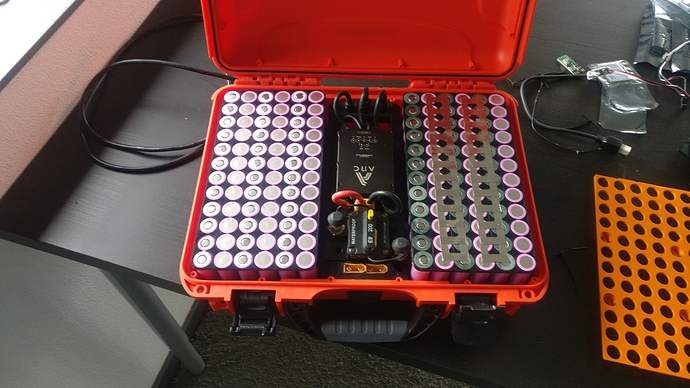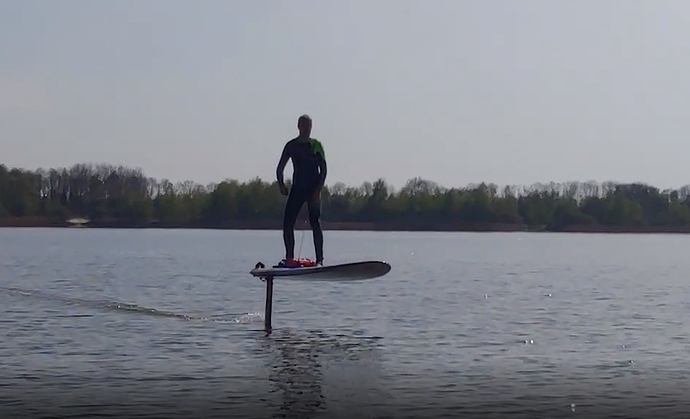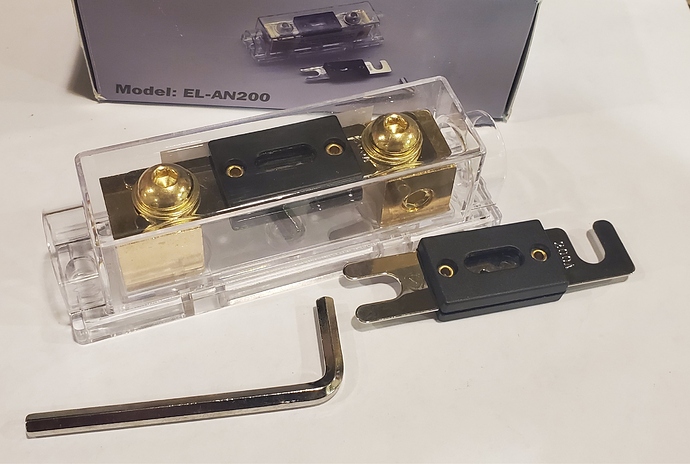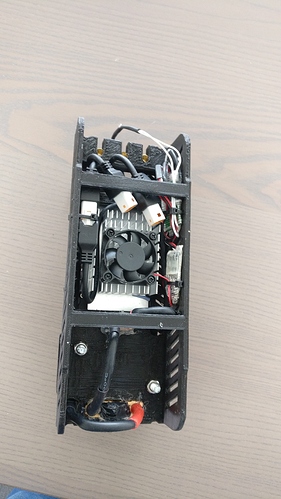Hi Guys,
I have been reading and learning so much from this forum, time for me to make a contribution.
I started my project mid 2019 having stumbled upon this forum. I have been windfoiling since 2018 and been having a blast doing it. We live next to a small lake surrounded by trees and the wind is always gusty and less then the surrounding area. Using the windfoil already increased my time on the water, but was still looking to have something for those windless days. So the idea was to use the existing windfoil gear to start e-foiling.
The first iteration hit the water in september 2019 and was completed for less than $1000. I was using a Max 004 case with two 12 Ah 6S Lipos. For a foil I was using a Neil Pryde ALU first generation, ESC: ARC200, Motor: modified APS 80100, RC: $30 waterproof remote
I did manage to get foiling on my knees on this setup, but the foil was very unstable, the battery case leaked, the prop broke after a couple of sessions and the batteries only lasted 10-15 minutes.
But concept proofen…
So time to move on to better gear. Over the winter I bought a new foil, better battery case and built my own battery packs. My idea was still to use my existing windfoil boards and therefore looked to a system which could be retro-fitted. So I stuck to use a suitcase type battery box. I chose a Nanuk910 case as the basis, because it is relatively low profile, and it has .stp files available allowing most of the prototyping to be done in Fusion360.
I managed to squeeze in all the required functions in the case:
- 2 x 6S12P battery (total 12S12P samsung 30Q)
- 200A breaker
- ARC200 ESC
- Receiver
- Watercooling block
- Killswitch
As a foil I am using the Slingshot Hoverglide Infinity 76 which I am really happy with. Also for windfoiling this foil gives early lift and is really stable.
For now I am using some 3d-printed covers to guide the cables up the mast and duck-tape to fit everything in place. I am planning to buy a separate mast so I can leave the motor and cabling in place when switching from e-foil to windfoiling.
The board is a RRD H-Fire 91. It is 145 liters and measures 236 x 91 cm. The setup has also been tested and working well on an old Starboard Start measuring 230 liters at 18 kgs.
I have also tested the setup as a boost motor for windfoiling, however this needs more work. The 80100 motor gives a lot of drag, and having to trim the sail and operating the throttle at the same time is kind of overcomplicating things. Maybe with a folding prop, a thinner motor and some kind of throttle mechanism on the boom it could work.
So I have been riding several succesfull sessions on this setup now. It has been a really fun experience getting to this stage and riding. Along the way I learned 3D printing, 3D drawing in Fusion 360, spotwelding and battery design etc.
A big thank you to the forum!
Shoresup






